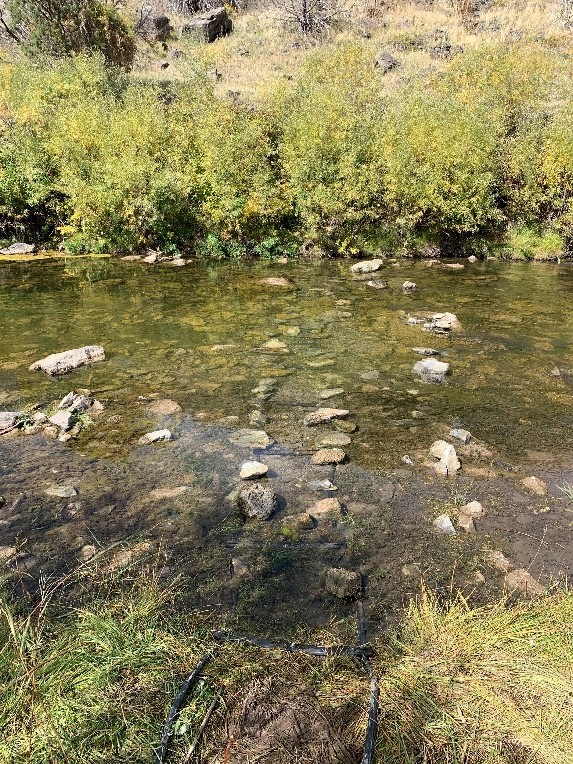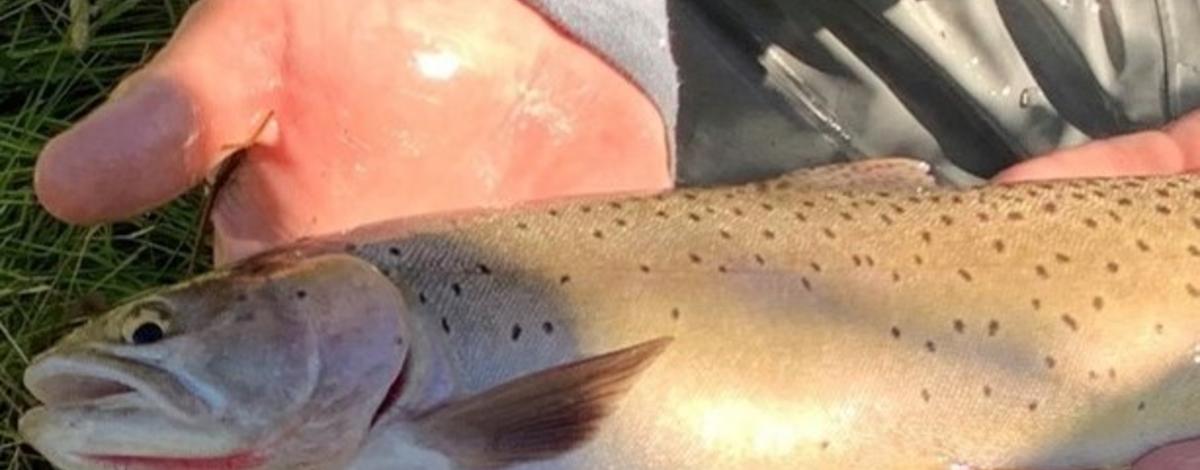Fish and Game fisheries biologists are on a constant search for better ways to understand and manage fish populations. As part of this quest for knowledge, biologists used electronic PIT tags to study the life history of Yellowstone cutthroat trout in Willow Creek and Ririe Reservoir.
In the Upper Snake Region, biologists have been using PIT tags to evaluate Yellowstone cutthroat trout movements, where they live in streams, and life history characteristics in the South Fork Snake River since 2008.
The strategy was so effective on the South Fork that they expanded PIT tags to learn more about Yellowstone cutthroat trout in the Teton River, and more recently the Willow Creek drainage, including Ririe Reservoir.
What is a PIT tag?
Passive integrated transponders, or PIT, tags are tools used to identify individual fish and provide fisheries biologists and managers with information that would otherwise be very difficult, or impossible to uncover. The technology has been used in fisheries research since the early 1980s, and its usage is so effective that not much has changed over the years.

Each PIT tag consists of a microchip, chip-capacitor, and antenna that is small enough to be inserted just under the skin of a fish. When placed under an electromagnetic field, each tag produces a signal with a unique alphanumeric code. These codes can be read with a PIT tag reader that produces the electromagnetic field and decodes the signal from the tag.
How is a PIT tag information collected?
Fisheries biologists most often use readers with stationary instream antennas that fish swim over, or hand-held readers used by swiping it over the body of a fish to read the tag. When a PIT tag is recorded by either an instream or handheld reader, the code is displayed and recorded to the reader’s memory. That code can then be looked up in a PIT tag database to determine where the fish was first tagged and any other encounters that may have occurred with that fish.
In 2021, fisheries biologists installed two PIT antennas in Willow Creek upstream of Ririe Reservoir. By having two antennas, biologists can determine whether fish are moving upstream or downstream. Since the instream antennas were installed, 254 Yellowstone cutthroat trout have been tagged. That includes fish from Willow Creek, its tributaries, and Ririe Reservoir.

Black tubes are an instream PIT antenna.
What did biologists discover?
Based on stream antenna detections, biologists have recorded Yellowstone cutthroat trout migrating from Willow Creek into Ririe Reservoir to presumably forage, overwinter, and mature into adults. Additionally, biologists tagged Yellowstone cutthroat trout in Ririe Reservoir in November 2021 and recorded 45% of those Yellowstone cutthroat trout returning to Willow Creek in April through June of 2022, the spawning season! This is known as an "adfluvial" life history strategy in which adult fish from a lake or reservoir use a stream for spawning.
In addition to detecting adlfuvial Yellowstone cutthroat trout in Willow Creek, biologists also found that some Yellowstone cutthroat that were tagged in Tex Creek (a tributary of Willow Creek) migrated downstream into Willow Creek and passed an instream antenna. This life history strategy is known as fluvial, in which fish disperse from a small tributary into a larger stream or river.
How is the data used?
Biologists will continue utilizing PIT tags to monitor patterns in the Willow Creek Yellowstone cutthroat trout population to better manage them. Understanding the life history strategies and associated movement patterns helps Fish and Game identify where potential problem areas are for these native trout relative to their suitable habitat or migratory pathways. This helps prioritize areas where limited funds for restoration can be most effectively spent to preserve, protect, and perpetuate the species for anglers to enjoy now and into the future.

